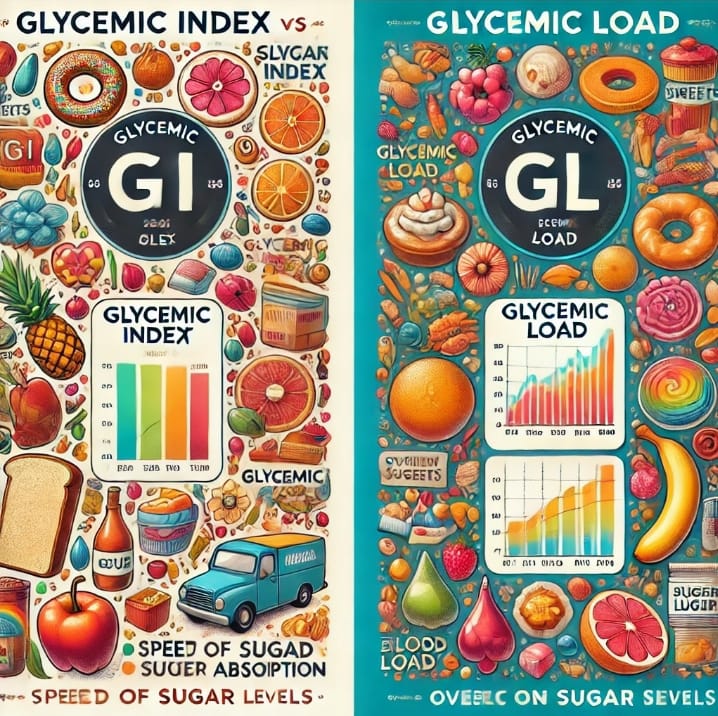
Glycemic Index vs. Glycemic Load: What's the Difference?
Glycemic Index vs. Glycemic Load: What's the Difference?
Understanding the difference between the glycemic index (GI) and glycemic load (GL) is crucial to effectively managing your blood sugar and choosing the right foods.
Indeed. These two concepts, although related, offer different perspectives on how foods affect our blood sugar levels.
Glycemic Index (GI)
The GI measures how quickly the carbohydrates in a food raise blood sugar. It is ranked on a scale of 0 to 100, with GIs ranging from low (≤55), moderate (56-69), and high (≥70). High GI foods, such as white bread, cause rapid spikes in blood sugar, while low GI foods, such as oatmeal, raise blood sugar slowly.
This measurement is particularly useful for understanding how different foods can influence blood sugar levels immediately after consumption.
Glycemic Load (GL)
The GL takes into account the GI and the amount of carbohydrates consumed, providing a more comprehensive view of the impact on blood sugar. It is calculated by multiplying the GI by the carbohydrates consumed, then dividing by 100.
A low GL is ≤10, moderate is 11-19, and high is ≥20. This approach allows us to assess not only the quality of carbohydrates but also their quantity in a given food portion.
Choosing the right foods
For optimal blood sugar management, choose foods with a low GI and GL. For example, although watermelon has a high GI, its GL is low due to its low carbohydrate content.
In contrast, white rice has a high total fat content despite a moderate total fat content. These distinctions highlight the importance of considering both the GI and total fat content when making informed food choices.
Why use IG and CG together?
Using GI and GL together helps you better understand the overall impact of foods on your blood sugar. The GI tells you how quickly a food can raise your blood sugar, while the GL gives you a more precise idea of this impact by taking into account the amount consumed.
This dual approach is particularly beneficial for people seeking to control their blood sugar for medical reasons or to improve their overall well-being.
Conclusion
In summary, although glycemic index and glycemic load are two distinct concepts, they are complementary in assessing the impact of foods on blood sugar. By incorporating these concepts into your daily food choices, you can better manage your metabolic health and make more informed choices that promote stable energy and lasting well-being.
So, understanding these concepts can transform your nutritional approach and help you achieve your long-term health goals.
Ultimately, using these tools together offers a more comprehensive strategy for maintaining stable blood sugar levels and supporting your overall health.
